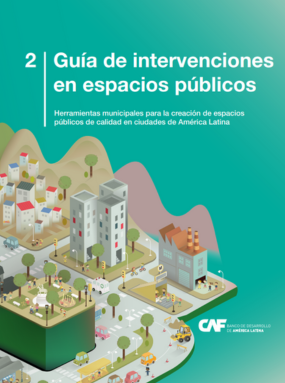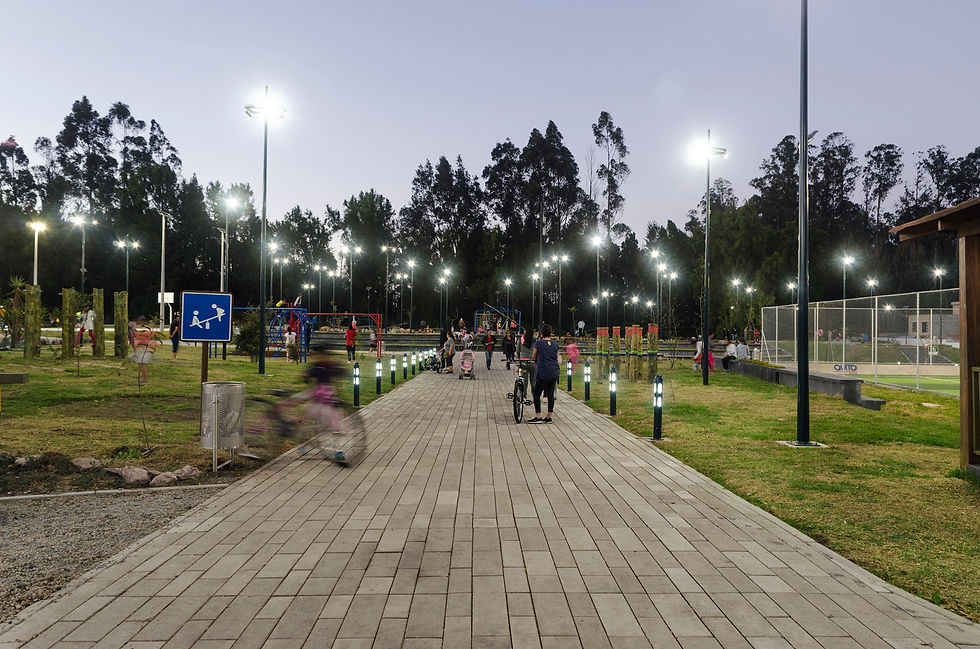#CAF #Guíadeintervencionesenespaciospúblicos #Noticias #Urbanismo #ciudad #Ciudades #participaciónciudadana #Agenda2030 #ObjetivosdeDesarrolloSostenible #ODS #vidapública #vidaurbana #EspacioPúblico

The Development Bank of Latin America-CAF launched the new guide to interventions in public spaces, This guide seeks to establish a roadmap to intervene in public spaces under a comprehensive approach, within the framework of compliance with the commitments assumed before the United Nations with the signing of the 2030 Agenda and the New Urban Agenda.

Latin America and the Caribbean have experienced an accelerated process of urban expansion in recent decades, which has generated multiple challenges in terms of urban planning; The COVID-19 pandemic accentuated these shortcomings, especially in the context of the lowest socio-economic strata, where there is great difficulty in accessing quality habitat and services.
In this context, public space acquired greater importance, due to its contribution to the creation of a healthy urban life. This raises the great need to recover and strengthen the physical conditions of public spaces and likewise an awareness of the responsibility that comes with the design of our habitat.
The guide provides us with some guidelines to rethink the role of public spaces in the comprehensive improvement of Latin American cities, these are some of them:
Value citizen participation. Perhaps one of the most frequent mistakes made by traditional urban planning and design tools is not considering the opinion of the citizens before developing the project, as a consequence these do not always respond to the real needs of the users and large investments fail. Participation contributes to the creation of democratic spaces, communication channels must be capable of integrating the cultural, religious and political conditions of the population in a technical quality intervention proposal.
View quality public space as an investment. Public space has been erroneously classified as a non-productive space in the city, due to the lack of knowledge about the impact that public spaces have on the value of the land in their surroundings, as well as their contribution to the informal economy, which is found in these places a productive environment.
Understand that streets are the main public space in cities, and must be rethought for citizens, not for vehicles. The streets constitute not only spaces for transit, but also for meeting, they weave the public life of cities.
Create synergistic relationships between urbanization processes and existing ecological systems. Green infrastructures are articulators of the urban form.
Organize the specific elements that, when related to each other, can satisfy the needs of recreation, mobility, participation, social ties, protection against natural disasters, employment and health.
Guarantee collective life or public life through public space, promoting close relationships between people.
The contemporary urban imaginary starts from the experiences offered to us by the places where we walk, play, talk, meet, work and have fun together: parks, avenues or green areas, streets, sidewalks, corners or stairs, small and large. areas of collective use, where public life becomes evident.
CAF's Cities with a Future initiative team, together with the City Hall of Córdoba (Argentina), held a Workshop on Access to Opportunities, in order to identify problems and formulate solutions to the lack of access to goods and services of the city, this was possible through the geolocation of available services (green spaces, sources of employment, hospitals, schools, etc.), compared with the places of residence of the different social groups. One of the most consistent results was that in terms of access to green areas; the higher the income, the greater the access to green areas; So there is still a long way to go in terms of the redistribution of green areas in cities and the dissolution of urban inequality.
According to the Accessible Natural Green Space Standard for England, everyone should have access to:
An area of at least 2 hectares, no more than 300 linear meters away (5 minutes walking) from your home.
At least one 20-hectare park within a 2 km radius.
An accessible area of 100 hectares within a radius of 5 km.
An accessible area of 500 hectares within 10 km
At least 1 hectare of nature reserve for every 1,000 inhabitants in the city.
Each public space fulfills a different dimension according to its scale and consequently has a particular impact within the city. In Latin America, cities have conventionally developed from a central square, where the most important political, commercial, and social activity was concentrated. In most cases, these centralities have become strategic economic zones, which preserve the largest and best urban facilities. In contrast, the peripheries, which as a result of the lack of urban planning are scarce in services, equipment and public spaces.
On a neighborhood or neighborhood scale, neighborhoods must have a network of public spaces with characteristics according to their location and the activities that take place around them, in order to enhance existing dynamics and enrich public life.
Each bank, each light pole or sidewalk is the opportunity to weave human relations in the public space. Therefore, it is vital to rethink public spaces based on people and the different ways in which they can inhabit them, facilitating their unrestricted use, regardless of age, gender, origin, nationality, sexual orientation, race, and motor skills. The ease of use and enjoyment of the public space will allow it to be an attractive and safe place, attracting new users.
Good public spaces adequately enhance social dynamics. Its management must ensure that this is an attractive and safe place for those who use it and the activities that take place there or around it.
The quality of public space will depend on its habitability, that is, on its ability to provide sufficient conditions to meet both individual and collective needs.
All habitable public spaces meet the following characteristics:
Versatility and security: Public space must be capable of offering equity in its use, a type of street furniture does not respond in the same way to the comfort needs of an older adult, a child or a person with reduced mobility, so it is necessary to contemplate different types of furniture in the same public space, the more people remain in public spaces, the greater the perception of security. On the contrary, empty public spaces are facilitators of insecurity.
Environmental and comfort conditions: Public spaces must offer comfort regardless of the time of day or time of year. The weather is always a variable to take into account, so contemplating shaded and protected spaces makes a public space an attractive place.
Management and participation: A public space managed and protected by its inhabitants in collaboration with local and municipal entities, will be a sustainable space over time, since it allows that, based on the experience of its most frequent users, that is, the neighbors and neighbors, it can be transformed and strengthened according to the needs.

Therefore, interventions in the public space must respond to different dimensions; Physics, which brings together the spatial qualities and the elements that facilitate its use; The social, which studies the users who inhabit the space and the way in which they use it, and the political dimension that includes the symbolic value of the place. The vision of a public space in an integral sense will guarantee an adequate planning or urban design product.
For more information consult our source:
Alegre, M., Rodríguez Garabot, E., Alata Ninapaytan, M. P., Nogales Fernández-Blanco, L., Quispe Mogrojevo, S., Velarde Herz, F., & De La Cruz Chaupiz, L. (2022). Guía de intervenciones en espacios públicos. Retrieved from https://cafscioteca.azurewebsites.net/handle/123456789/2015




コメント